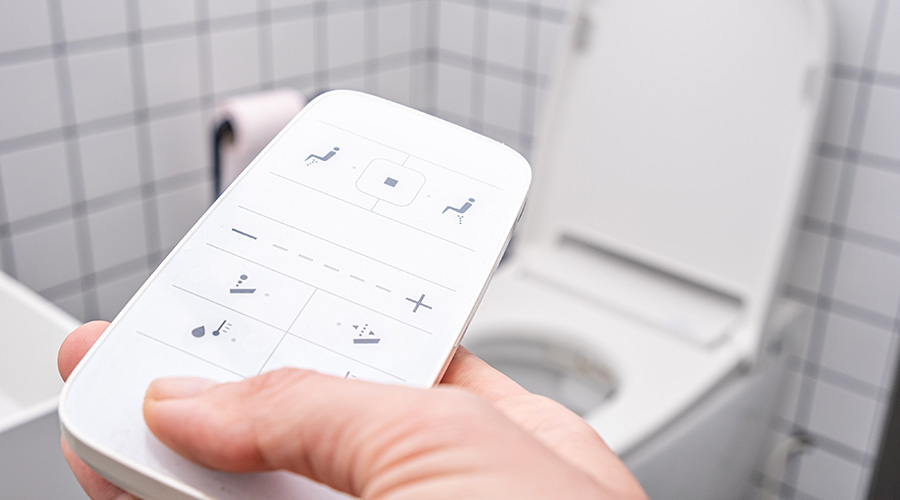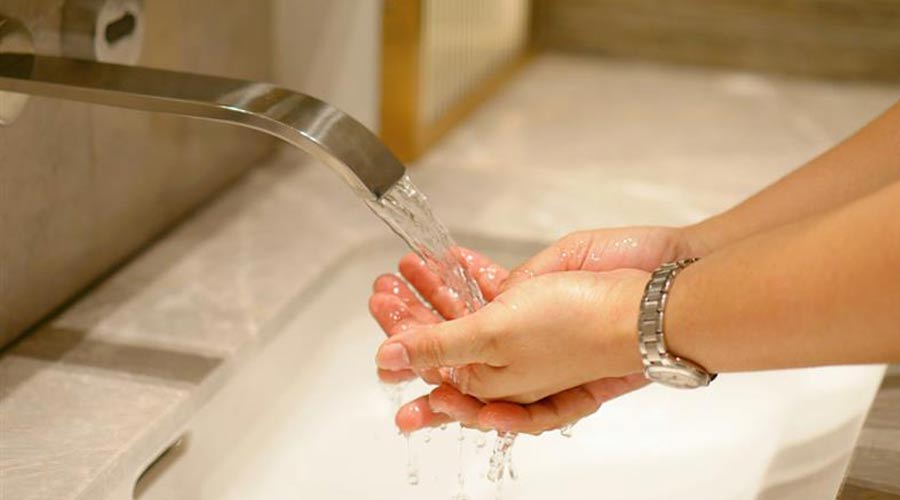Slow Drains First Sign of Clogged Plumbing
For maintenance workers with drain-cleaning responsibilities, the first sign of a blocked trap below a sink or shower is slow draining. They can easily clear the blockage with liquid drain cleaner. The cleaner should react in the drain for at least 30 minutes before flushing. They might need several tries before the drain flows freely. For more persistent trap buildups, a snake or spinner auger can be the answer.
Quickly clearing multi-fixture blockages requires up-to-date knowledge of the piping systems. In most institutions, several drain lines exit through several laterals connecting at different points to the sewer main, so fully understanding which fixtures drain to which laterals before entering the sewer main is essential.
For instance, if sink A and toilet B drain into a common sewer drain lateral C, and they are backing up, the place to go to correct the blockage is the cleanout in lateral C that serves both drains. Timing generally is important in such situations, because of the disruption and health issues that can result from clogs and backups. Consequently, a good preemptive measure is to locate these drains ahead of time and determine the fixtures that drain into them before an emergency arises.
Another valuable troubleshooting tool is keeping good records of all maintenance work orders involving various piping systems. This tactic will save precious time when an emergency occurs, since workers will not have to waste time tracing the lines to find the right cleanout fitting.
Giving some thought about quick access to these cleanout points is also important. Technicians need to have access to these points without having to open a hole in a wall or remove permanently mounted wall panels.
Zeroing In
Armed with a solid understanding of how and where blockages in plumbing systems are most likely to occur, technicians can open a cleanout close to the actual blockage site. The first step is to use a hammer and pin bar to carefully punch a small opening in the cleanout plug at the bottom of a riser. Next, drain it into a container placed under the plug opening. Then, the technician can remove the cleanout plug and insert a short rod flattened on the end into the line to break up the nearby clog.
In this case, the pipe wall up to the blockage is visible with a flashlight, so the technician can inspect it to ensure the blockage is completely clear. The technician also can check the pipe wall at the site to see if the wall has collapsed or deteriorated to the point where it will soon have to be replaced.
If the blockage is farther down the line where the technician cannot see it with a flashlight, one option is to insert a closed circuit television camera into the drain to find the cause and location. The camera enables the technician to see the condition of the pipe walls to determine if a replacement is needed.
Connected to a PC, the camera can record and report situations with integrated graphics transmitted anywhere accessible on a network. It also can store data managers can use later in planning repairs and training new technicians. If the PC also contains graphics of the drain network, a technician can retrieve the stored data to anticipate the location of bends and offsets, as well as where previous clogs occurred, to diagnose new problems.
Related Topics:













